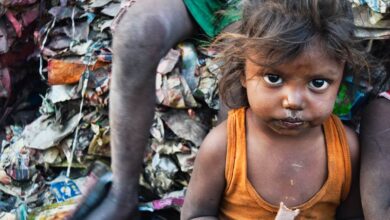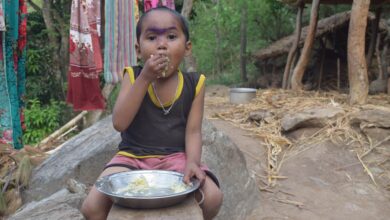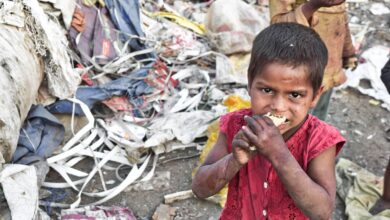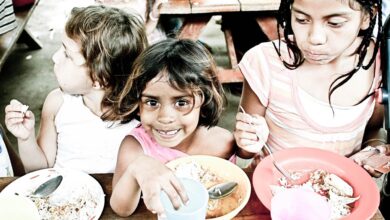Henger Kids for Poverty

Introduction
Child poverty is a pressing issue affecting millions of children worldwide. The Henger Kids for Poverty initiative aims to address this problem by providing support, education, and resources to children in need. This article explores the impact of poverty on children, particularly in terms of education, health, and psychological well-being. We also delve into various strategies and initiatives, including government programs, community support, and non-profit organizations, that are working to break the cycle of child poverty and empower families. By understanding the challenges faced by children living in poverty and taking action, we can create sustainable solutions that improve their lives.
H2: Understanding Child Poverty
Child poverty refers to the condition where children live in households that lack the necessary resources to provide for their basic needs, such as food, shelter, clothing, and access to education and healthcare. It is a complex issue influenced by various factors, including economic disparities, lack of educational opportunities, and systemic inequality.
H3: The Impact of Poverty on Children
Children growing up in poverty face numerous challenges that can have long-lasting effects on their lives. This section explores the key areas impacted by poverty.
H4: Education and Child Poverty
Poverty often limits children’s access to quality education. Limited financial resources may result in inadequate school facilities, lack of educational materials, and reduced opportunities for extracurricular activities. As a result, children from impoverished backgrounds are more likely to struggle academically and have lower graduation rates.
H4: Health and Nutrition
Poverty can lead to inadequate nutrition, limited access to healthcare services, and substandard living conditions. Children from low-income families are more susceptible to malnutrition, chronic illnesses, and developmental delays. The lack of proper healthcare exacerbates these issues, hindering their overall well-being.
H4: Psychological Effects
Living in poverty can have detrimental effects on a child’s mental health. Constant stress, uncertainty, and exposure to adverse environments can lead to anxiety, depression, and low self-esteem. The psychological impact of poverty often hinders a child’s ability to thrive and reach their full potential.
H2: Breaking the Cycle of Child Poverty
Addressing child poverty requires comprehensive strategies that focus on both immediate relief and long-term solutions. This section explores various initiatives aimed at breaking the cycle of child poverty.
H3: Government Initiatives
Governments play a crucial role in combating child poverty through policies and programs. They can implement measures such as income support, access to healthcare, affordable housing, and quality education. By prioritizing the needs of children and investing in their well-being, governments can create a more equitable society.
H3: Community Support
Communities have a significant impact on children’s lives. Local organizations, charities, and community centers can provide support systems, mentorship, and after-school programs that offer a safe and nurturing environment for children in poverty. These initiatives foster resilience and encourage community engagement.
H3: Non-Profit Organizations
Non-profit organizations dedicated to eradicating child poverty are instrumental in providing direct assistance and resources to affected families. They often focus on areas such as education, healthcare, and access to basic necessities. Through fundraising, partnerships, and advocacy, these organizations work tirelessly to alleviate the burden of poverty on children.
H3: Empowering Families
Empowering families is vital for breaking the cycle of child poverty. By equipping parents and caregivers with the necessary tools and resources, we can help them overcome financial hardships and provide a stable environment for their children. This can be achieved through:
H4: Financial Literacy and Job Skills Training
Providing financial literacy education and job skills training to parents and caregivers can empower them to secure better employment opportunities and improve their financial situation. By gaining knowledge about budgeting, saving, and accessing financial resources, families can become more self-sufficient and better equipped to support their children.
H4: Parenting Support and Education
Supporting parents in their role as caregivers is crucial for the well-being of children. Parenting support programs can provide guidance on child development, positive discipline techniques, and creating nurturing environments at home. By strengthening parenting skills, families can promote the healthy development and resilience of their children.
H4: Access to Affordable Housing
Safe and stable housing is a fundamental need for families. Affordable housing initiatives can help families escape unstable living conditions and provide a secure foundation for their children. Collaborations between governments, non-profit organizations, and housing agencies are essential in creating affordable housing options for low-income families.
H2: Creating Sustainable Solutions
To address child poverty effectively, we must focus on creating sustainable solutions that go beyond short-term relief. This involves:
H3: Education and Skills Development
Investing in education and skills development programs for children from low-income backgrounds can break the cycle of poverty. By providing quality education, scholarships, and vocational training opportunities, we can equip children with the knowledge and skills necessary for a brighter future. Education serves as a pathway out of poverty, empowering children to pursue their dreams and contribute positively to society.
H3: Economic Empowerment
Promoting economic empowerment through entrepreneurship and microfinance initiatives can uplift families out of poverty. By providing access to small loans, business training, and mentorship, we enable parents to start their own businesses and generate income. Economic empowerment creates a sense of self-sufficiency and instills a long-lasting impact on families and their communities.
H3: Social Safety Nets
Establishing robust social safety nets ensures that vulnerable families have access to essential services and support during times of crisis. Safety net programs, such as food assistance, healthcare subsidies, and emergency aid, provide immediate relief and help families weather difficult circumstances. These programs act as a safety net, preventing families from falling further into poverty.
Conclusion
Child poverty is a pervasive issue that demands our attention and action. By understanding the impact of poverty on children and implementing comprehensive strategies, we can make a difference in their lives. Through government initiatives, community support, non-profit organizations, and empowering families, we have the power to break the cycle of child poverty and create a more equitable and prosperous future for all children.
FAQs
- How does child poverty affect a child’s future?
Child poverty can have long-lasting effects on a child’s future. It hinders their educational attainment, limits their access to healthcare, and increases the risk of poor mental health. Breaking the cycle of child poverty is crucial to ensure every child has equal opportunities for success.
- What role can communities play in combating child poverty?
Communities play a vital role in combating child poverty. They can provide support systems, mentorship, and after-school programs that offer a safe and nurturing environment for children in poverty. Community engagement and collaboration can create lasting change.
- How can non-profit organizations help alleviate child poverty?
Non-profit organizations dedicated to eradicating child poverty provide direct assistance and resources to affected families. They focus on areas such as education, healthcare, and access to basic necessities. Through fundraising, partnerships, and advocacy, these organizations work tirelessly to alleviate




